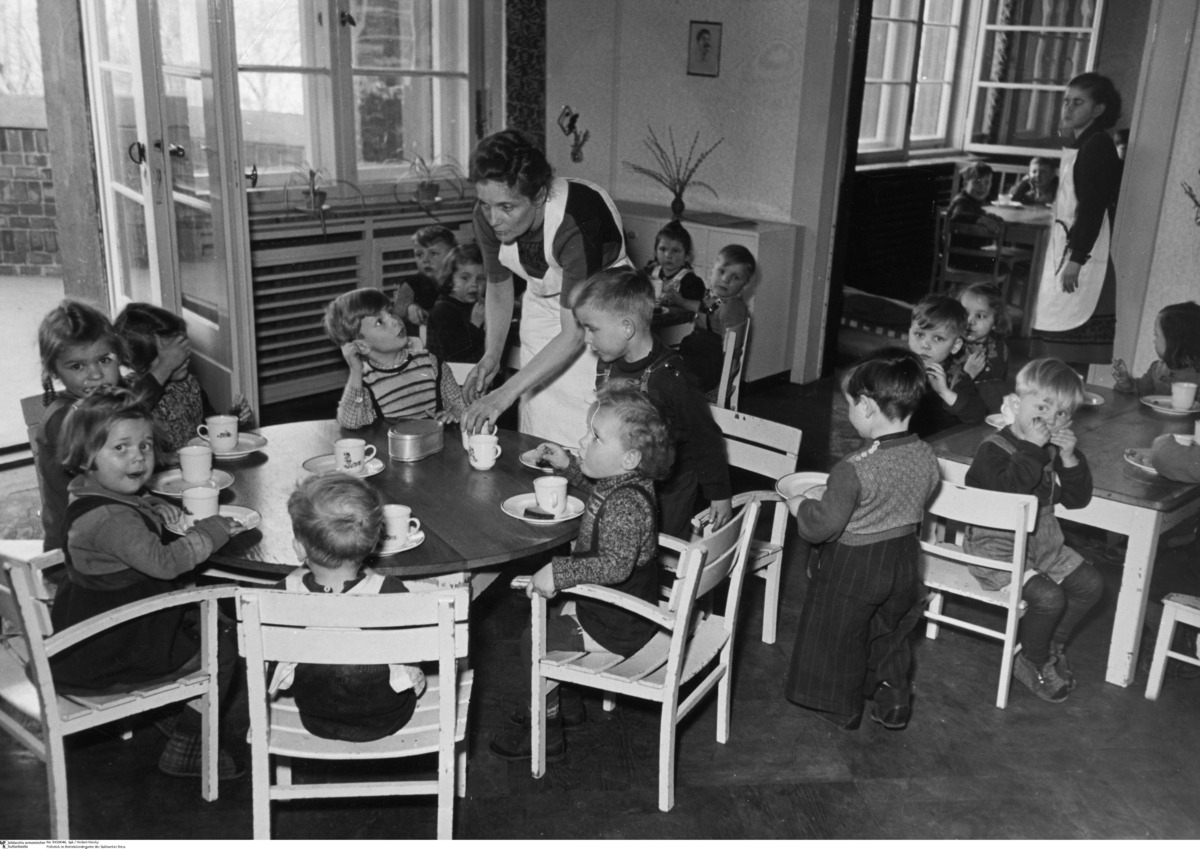Abstract
In the early 1950s, the GDR began expanding daycare in factories and enterprises in an attempt to raise female employment as a whole but also to train unskilled female laborers to meet the demand for specialized workers in East German industry. The number of daycare facilities for children aged three and younger rose from 61 in 1950 to 307 in 1955, bringing the number of individual daycare slots from around 1,050 in 1950 to 12,600 in 1955. The number of kindergartens for three- to six-year-olds (excluding seasonal facilities) also increased, from approximately 4,300 in 1949 to over 6,900 in 1955. As a result of the expanded daycare network, the share of women in the workforce climbed to 44 percent in the mid-1950s. The facility shown here was set up in the nationally-owned Riesa steelworks, which went on to become one the most important steel manufacturers in the GDR.
